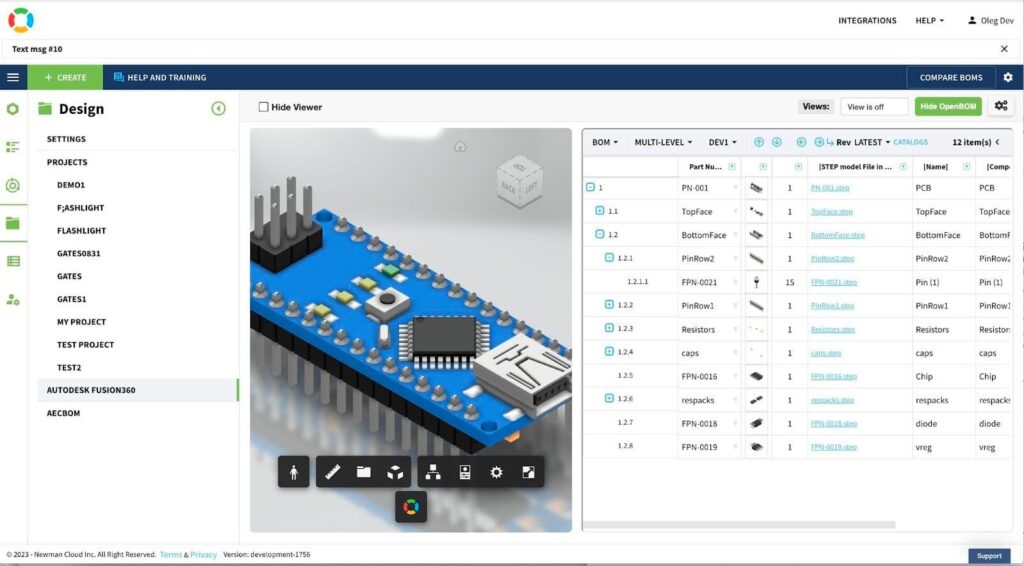
I’m attending Autodesk DevCon 2023 today in the unusually sunny weather in San Francisco. Autodesk is on a mission to turn the industry from files to data. The key element of this strategy includes breaking monolithic documents into granular data and making this data easily accessible online via Autodesk Platform Services Data API.

Here are some screenshots I took earlier this morning during the DevCon sessions. You can appreciate the great vision of Autodesk and the way the Autodesk Platform Service (APS) team is taking to bring this vision into reality. For the last decade, Autodesk invested an enormous amount of resources in building its cloud platform (formerly known as Forge). And it certainly started to bring benefits.

Autodesk has presented their MFG Model and AEC Model combined with data APIs that can help you to bring information out of the files and models loaded into the platform. It could be Autodesk native files such as Revit, or Inventor, cloud products like Fuision360 as well as files created with other CAD vendors.


The interesting thing about cloud platforms and data APIs is that they provide a foundation for digital workflows companies use to perform their business activities. The latter can be really tricky because ultimately no one is looking at how to get the data, but looking at how to perform some of their business processes and activities. For example, making RFQs and sending them to multiple suppliers can be one many companies are looking for. Another very commonly used scenario is to perform some calculations using the data extracted from data models such as cost. One more example that is commonly used is making some assessment about compliance or sustainability.
Here is an elephant in the room. The most commonly used method that can be used to perform the scenarios I described above is to export data to Excel (or another form of spreadsheet) and to perform tasks such as calculation, data manipulation, comparison, or sending Excels (together with neutral geometry data) to business partners.
While this is the most typical thing that is happening in the industry, if we think about it in the context of digital transformation, it doesn’t move the needle compared to the scenarios where data was in CAD files, extracted using CAD API, and sent to Excel. Moving data to Excel (or spreadsheets) still follows the pre-digital paradigm of non-granular data. And this is how I come to the topic of Data Pipelines.
From Data API to Data Pipelines
One the grand schema of things, each time you convert the data from one document to another, you have a chance of introducing mistakes. Especially if this step is manual and requires some human intervention.
Autodesk Data API brings a huge advantage to the process of transformation from files to granular data. Data API allows us to forget about files and focus on data connected to some semantically meaningful attributes (let’s say project name or part number or manufacturer model). Another thing that Autodesk Data API allows to do is to eliminate the add-ins – a piece of software you need to put in the CAD environment (eg. Solidworks or Inventor or Fusion360 to extract the data). Now, it is seamless.
OpenBOM takes full advantage of Autodesk Platform Service (APS) and Data APIs by getting information straight from the cloud. In our yesterday announcement – OpenBOM Unveils New and Enhanced Features to Streamline Design Data Management and Cloud Design Integration, we introduced a new way how OpenBOM allows design data to be extracted and placed in the OpenBOM engineering to procurement pipeline.

Take a look at the following example of Fusion360 data integration into OpenBOM procurement pipeline. The data is seamlessly integrated and extracted from Fusion 360 design and becomes available in a product structure (BOM) presented in a structured format with all attributes, derivative files (eg. STEP), which allows to procurement department to order components and send the data to suppliers and contractors for custom parts.

Similar data pimples to what I presented above can be done with other design data supported by Autodesk Platform Services (APS).
Conclusion
The main goal of digital transformation is to eliminate inefficiencies in data handover between people and organizations and establish pure digital workflows that enable processes with pure digital data pipelines. Such data pipelines allow automatic data appearance and moving information between engineers, departments, and organizations.
At OpenBOM, we are excited to partner with Autodesk to support digital workflows and leverage Autodesk Platform Services (APS) Data APIs to simplify product development and manufacturing. Ultimately, the goal of manufacturing companies is to build products faster and OpenBOM supports this goal by providing accurate data to fuel communication, eliminate inefficiencies, and support the decision process.
REGISTER FOR FREE to check how OpenBOM can help you to streamline your processes by introducing native digital data pipelines.
Best, Oleg
Join our newsletter to receive a weekly portion of news, articles, and tips about OpenBOM and our community.










